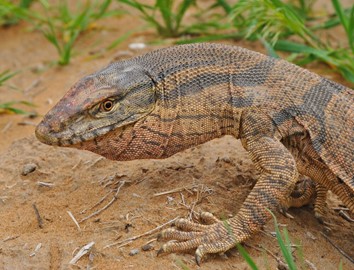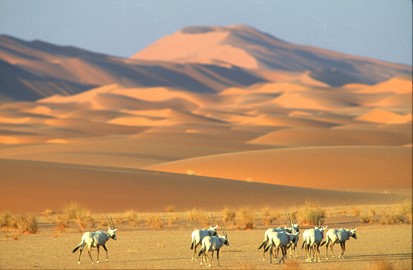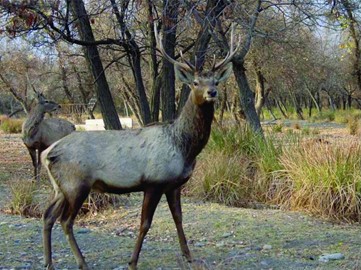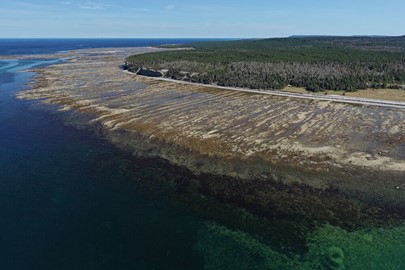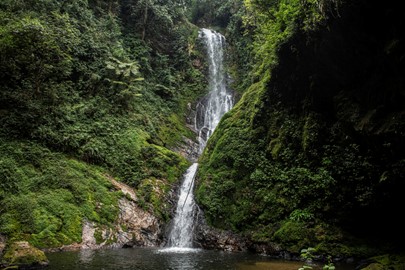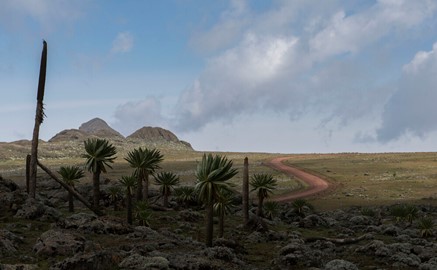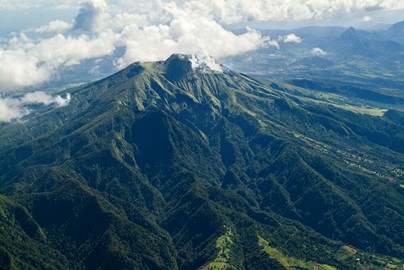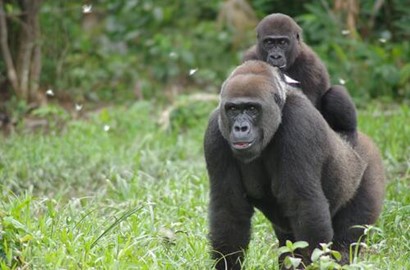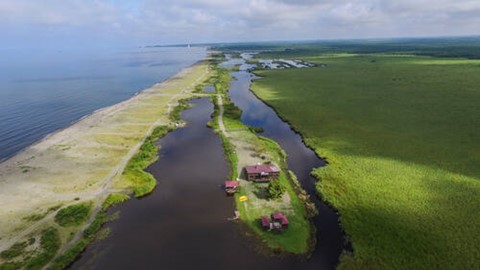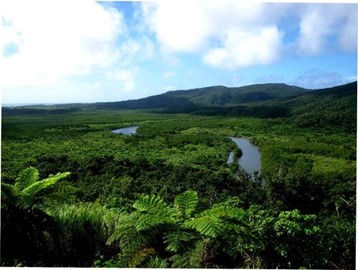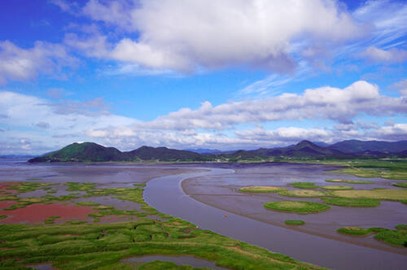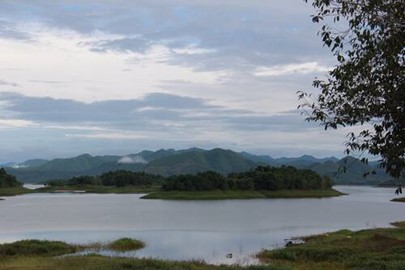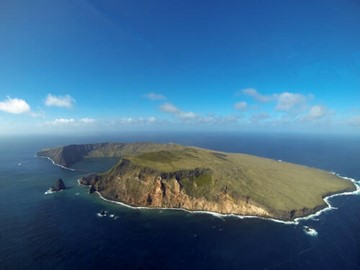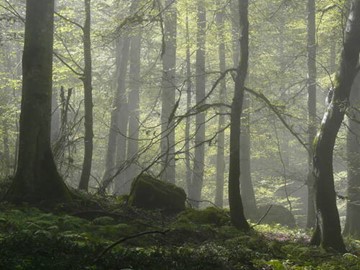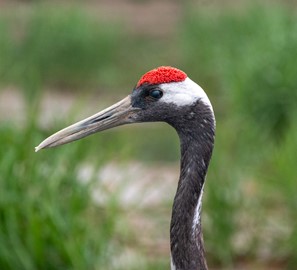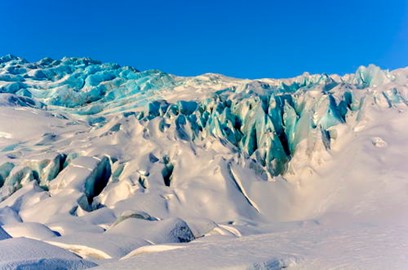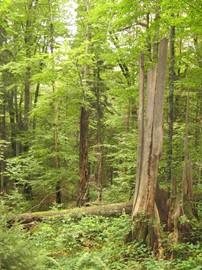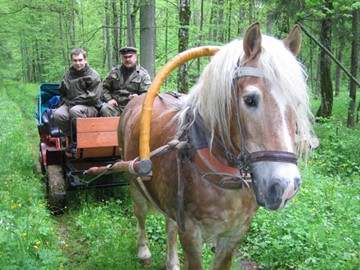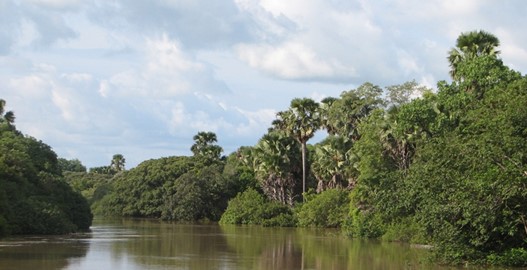category :: natural
Vjetrenica Cave, Ravno
Located in the Dinaric mountain range, the property stands out with its remarkable cave biodiversity and endemicity. Known since antiquity, the well-conserved representation of karst topography is one of the world’s most important biodiversity hotspots for cave-dwelling fauna, notably subterranean aquatic fauna. It is home to a number of globally threatened vertebrate species, and the only subterranean tubeworm in the world, as well as a diversity of plant species endemic to the Balkans. Additionally, sever... Read More
Lençóis Maranhenses National Park
The property is located in northeastern Brazil, on the east coast of Maranhão, in a transition zone between three Brazilian biomes: Cerrado, Caatinga and Amazon. More than half of its area consists of a white coastal dune field with temporary and permanent lagoons. Beyond its important role in biodiversity conservation, the park boasts globally significant aesthetic and geological/geomorphological values. Along an 80 km coastline, with beaches followed by plains, the prevailing winds shape the dunes into lo... Read More
Badain Jaran Desert
Located in the Alashan Plateau in the hyper-arid and temperate desert region of northwestern China, the Badain Jaran Desert is a meeting point for three sandy regions of China and is the country’s third largest desert and second largest drifting desert. The property stands out with its high density of mega-dunes, intersected with inter-dunal lakes. It displays spectacular ongoing geological and geomorphic features of desert landscapes and landforms which may well be unparalleled. Noteworthy features, among ... Read More
The Flow Country
The serial property, located in the Highland Region of Scotland, is considered the most outstanding example of an actively accumulating blanket bog landscape. This peatland ecosystem, which has been accumulating for the past 9,000 years, provides a diversity of habitats home to a distinct combination of bird species and displays a remarkable diversity of features not found anywhere else on Earth. Peatlands play an important role in storing carbon and the property’s ongoing peat-forming ecological processes ... Read More
Cold Winter Deserts of Turan
This transnational property comprises fourteen component parts found across arid areas of Central Asia’s temperate zone between the Caspian Sea and the Turanian high mountains. The area is subject to extreme climatic conditions with very cold winters and hot summers, and boasts an exceptionally diverse flora and fauna that has adapted to the harsh conditions. The property also represents a considerable diversity of desert ecosystems, spanning a distance of more than 1,500 kilometres from East to West. Each ... Read More
Uruq Bani Ma’arid
The property encompasses the western part of the greatest expanse of windblown sand on Earth, known as Ar Rub' al-KhaIi, and conserves one of the Earth’s most spectacular desert landscapes. The varied topography of the property creates a wide range of wildlife habitats and the site is globally notable due to the reintroduction of iconic desert animals, including the Arabian Oryx (Oryx leucoryx) and Arabian Sand Gazelle (Gazella marica), into their natural habitats after decades of extinction in the wild... Read More
Tugay forests
This property is located between the Vakhsh and Panj rivers in southwestern Tajikistan. The Reserve includes extensive riparian tugay ecosystems, the sandy Kashka-Kum desert, the Buritau peak, as well as the Hodja-Kaziyon mountains. The property is composed of a series of floodplain terraces covered by alluvial soils, comprising tugay riverine forests with very specific biodiversity in the valley. The tugay forests in the reserve represent the largest and most intact tugay forest of this type in Central Asi... Read More
Anticosti
Situated on the island of Anticosti, the largest island in Quebec, this property is the most complete and best preserved palaeontological record of the first mass extinction of animal life, 447-437 million years ago. It contains the best preserved fossil record of marine life covering 10 million years of Earth history. The abundance, diversity, and exquisite preservation of the fossils are exceptional and allow for world-class scientific work. Thousands of large bedding surfaces allow the observation and st... Read More
Evaporitic Karst and Caves
This serial property is an unusually well-preserved and extensive epigenic gypsum karst terrain. It includes a very high density of caves: over 900 caves in a relatively small area, with over 100 km of caves in total. It is the first and the best studied evaporitic karst in the world, with academic work beginning in the 16th century. It also includes some of the deepest gypsum caves in existence, reaching 265 meters below the surface.
Nyungwe National Park
This serial property represents an important area for rainforest conservation in Central Africa. The property is home to intact forests and peat bogs, moors, thickets and grasslands, providing habitats to a highly diverse flora and fauna. The Park also contains the most significant natural habitats for a number of species found nowhere else in the world, including the globally threatened Eastern Chimpanzee (Pan troglodytes schweinfurthii), Golden Monkey (Cercopithecus mitis ssp. kandti) and the Critically E... Read More
Bale Mountains National Park
This property protects a landscape mosaic of extraordinary beauty that is shaped by the combined forces of ancient lava outpourings, glaciation and the dissection by the Great Rift Valley. It features volcanic peaks and ridges, dramatic escarpments, sweeping valleys, glacial lakes, lush forests, deep gorges and numerous waterfalls, creating exceptional natural beauty. The property harbours diverse and unique biodiversity at ecosystem, species and genetic levels, and five major rivers originate within the Pa... Read More
Odzala Kokoua
This property is an excellent example, at an exceptionally large-scale, of the process of post-glacial forest recolonization of savanna ecosystems. It is therefore ecologically significant as a convergence point of multiple ecosystem types (Congolese Forest, Lower Guinean Forest and Savanna). The broad range of age classifications across the forest succession spectrum contributes to the park’s highly distinct ecology, incorporating a broad range of remarkable ecological processes. It is one of the most impo... Read More
Volcanoes and Forests of Northern Martinique
The global significance of Mount Pelée and Pitons du Carbet is based on its representation of volcanic features, materials and processes. The 1902-1905 eruption is considered a key event for the history of volcanology causing a dramatic impact on St. Pierre town, resulting in a tragic loss of life, and a legacy that remains part of the culture of Martinique. The serial property is home to globally threatened species such as the Martinique Volcano Frog (Allobates chalcopis), the Lacépède’s Ground Snake ... Read More
Ivindo
Situated on the equator in northern Gabon the largely pristine site encompasses an area of almost 300,000 ha crossed by a network of picturesque blackwater rivers. It features rapids and waterfalls bordered by intact rainforest, which make for a landscape of great aesthetic value. The site’s aquatic habitats harbour endemic freshwater fish species, 13 of which are threatened, and at least seven species of Podostemaceae riverweeds, with probable micro-endemic aquatic flora at each waterfall. Many fish specie... Read More
Colchic Rainforests and Wetlands
The property comprises seven component parts, within an 80km long corridor along the warm-temperate and extremely humid eastern coast of the Black Sea. They provide a series of the most typical Colchic ecosystems at altitudes ranging from sea level to more than 2,500 metres above it. The main ecosystems are ancient deciduous Colchic rainforests and wetlands, percolation bogs and other mire types of the distinct Colchic mire region. The extremely humid broad-leaved rainforests comprise a highly diverse flora... Read More
Amami Oshima Island
Encompassing 42,698 hectares of subtropical rainforests on four islands on a chain located in the southwest of Japan, the serial site forms an arc on the boundary of the East China Sea and Philippine Sea whose highest point, Mount Yuwandake on Amami-Oshima Island, rises 694 metres above sea level. Entirely uninhabited by humans, the site has high biodiversity value with a very high percentage of endemic species, many of them globally threatened. The site is home to endemic plants, mammals, birds, reptiles, ... Read More
Getbol, Korean Tidal Flats
Situated in the eastern Yellow Sea on the southwestern and southern coast of the Republic of Korea, the site comprises four component parts: Seocheon Getbol, Gochang Getbol, Shinan Getbol and Boseong-Suncheon Getbol. The site exhibits a complex combination of geological, oceanographic and climatologic conditions that have led to the development of coastal diverse sedimentary systems. Each component represents one of four tidal flat subtypes (estuarine type, open embayed type, archipelago type and semi-enclo... Read More
Kaeng Krachan Forest
The site is located along the Thailand side of the Tenasserim mountain range, part of a north-south granite and limestone mountain ridge running down the Malay Peninsula. Located at the cross-roads between the Himalayan, Indochina, and Sumatran faunal and floral realms, the property is home to rich biodiversity. It is dominated by semi-evergreen/dry evergreen and moist evergreen forest with some mixed deciduous forest, montane forest, and deciduous dipterocarp forest. A number of endemic and globally endang... Read More
French Austral Lands and Seas
The French Austral Lands and Seas comprise the largest of the rare emerged land masses in the southern Indian Ocean: the Crozet Archipelago, the Kerguelen Islands, Saint-Paul and Amsterdam Islands as well as 60 small sub-Antarctic islands. This “oasis” in the middle of the Southern Ocean covers an area of more than 67 million ha and supports one of the highest concentrations of birds and marine mammals in the world. In particular, it has the largest population of King Penguins and Yellow-nosed albatrosses i... Read More
Hyrcanian Forests
Hyrcanian forests form a unique forested massif that stretches 850 km along the southern coast of the Caspian Sea. The history of these broad-leaved forests dates back 25 to 50 million years, when they covered most of this Northern Temperate region. These ancient forest areas retreated during the Quaternary glaciations and then expanded again as the climate became milder. Their floristic biodiversity is remarkable: 44% of the vascular plants known in Iran are found in the Hyrcanian region, which only covers... Read More
Migratory Bird Sanctuaries
The site features an intertidal mudflat system considered to be the largest in the world. These mudflats, as well as marshes and shoals, are exceptionally productive and serve as growth areas for many species of fish and crustaceans. The intertidal areas of the Yellow Sea/Gulf of Bohai are of global importance for the gathering of many migratory bird species that use the East Asian-Australasian flyway. Large gatherings of birds, including some of the world's most endangered species, depend on the coastline ... Read More
Vatnajokull
This iconic volcanic region covers an area of over 1,400,000 ha, nearly 14% of Iceland's territory. It numbers ten central volcanoes, eight of which are subglacial. Two of these are among the most active in Iceland. The interaction between volcanoes and the rifts that underlie the Vatnajökull ice cap takes many forms, the most spectacular of which is the jökulhlaup – a sudden flood caused by the breach of the margin of a glacier during an eruption. This recurrent phenomenon has led to the emergence of uniqu... Read More
Primeval Beech Forests
This transboundary property stretches over 12 countries. Since the end of the last Ice Age, European Beech spread from a few isolated refuge areas in the Alps, Carpathians, Dinarides, Mediterranean and Pyrenees over a short period of a few thousand years in a process that is still ongoing. The successful expansion across a whole continent is related to the tree’s adaptability and tolerance of different climatic, geographical and physical conditions.
Bialowieza Forest
The Białowieża Forest World Heritage site, on the border between Poland and Belarus, is an immense range of primary forest including both conifers and broadleaved trees covering a total area of 141,885 hectares. Situated on the watershed of the Baltic Sea and Black Sea, this transboundary property is exceptional for the opportunities it offers for biodiversity conservation. It is home to the largest population of the property’s iconic species, the European bison.
W Arly Pendjari
This transnational extension (Benin, Burkina Faso) to the W National Park of Niger, inscribed in 1996 on the World Heritage List, cover a major expanse of intact Sudano-Sahelian savannah, with vegetation types including grasslands, shrub lands, wooded savannah and extensive gallery forests. It includes the largest and most important continuum of terrestrial, semi-aquatic and aquatic ecosystems in the West African savannah belt. The property is a refuge for wildlife species that have disappeared elsewhere in... Read More




